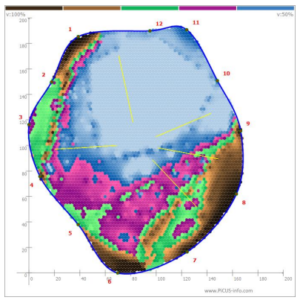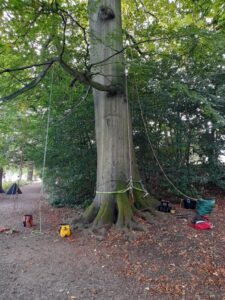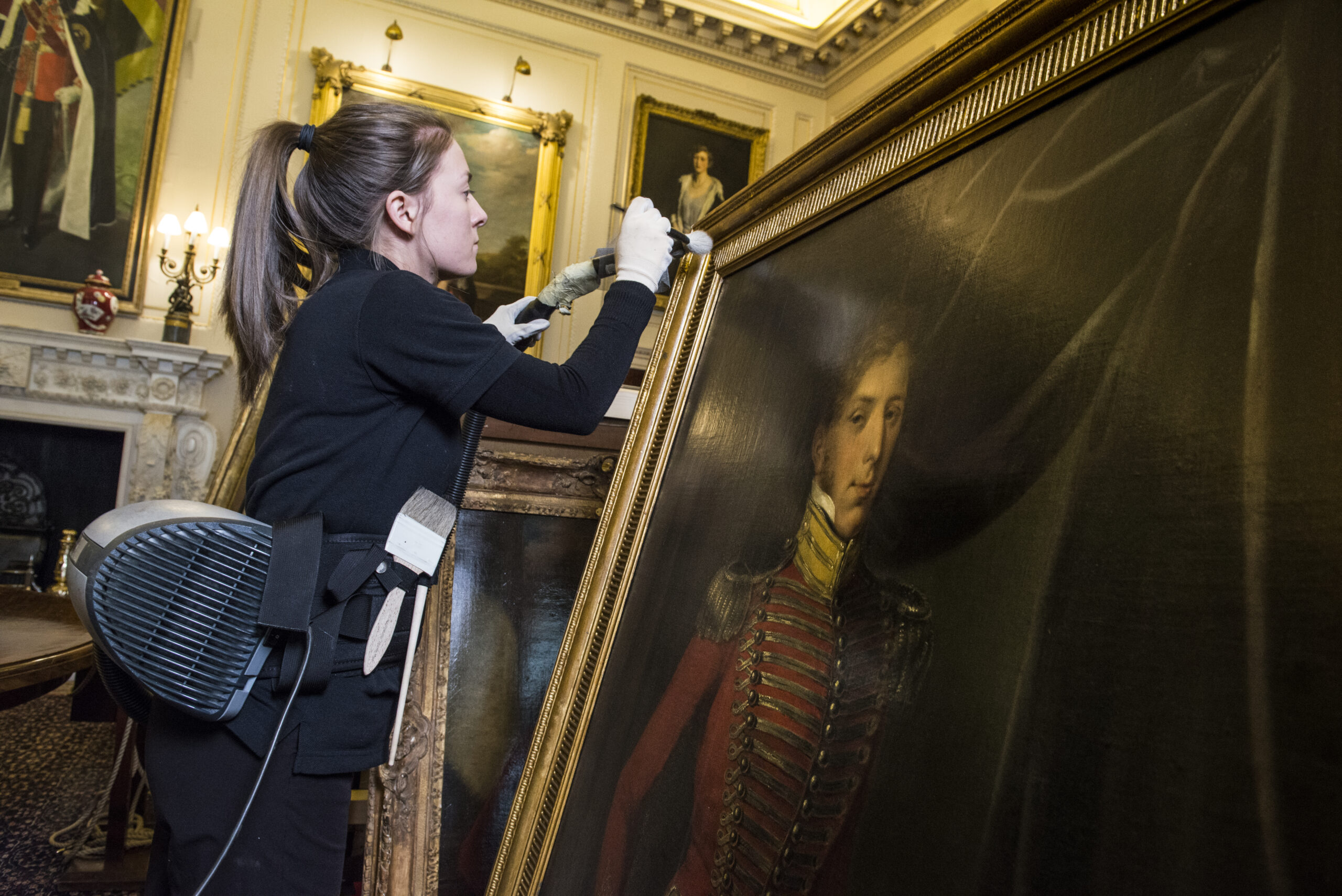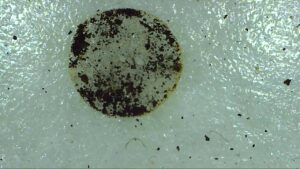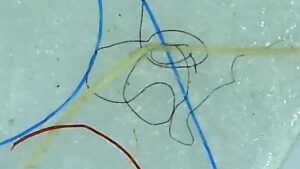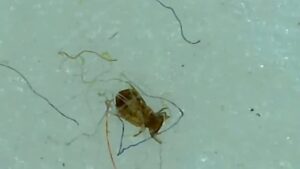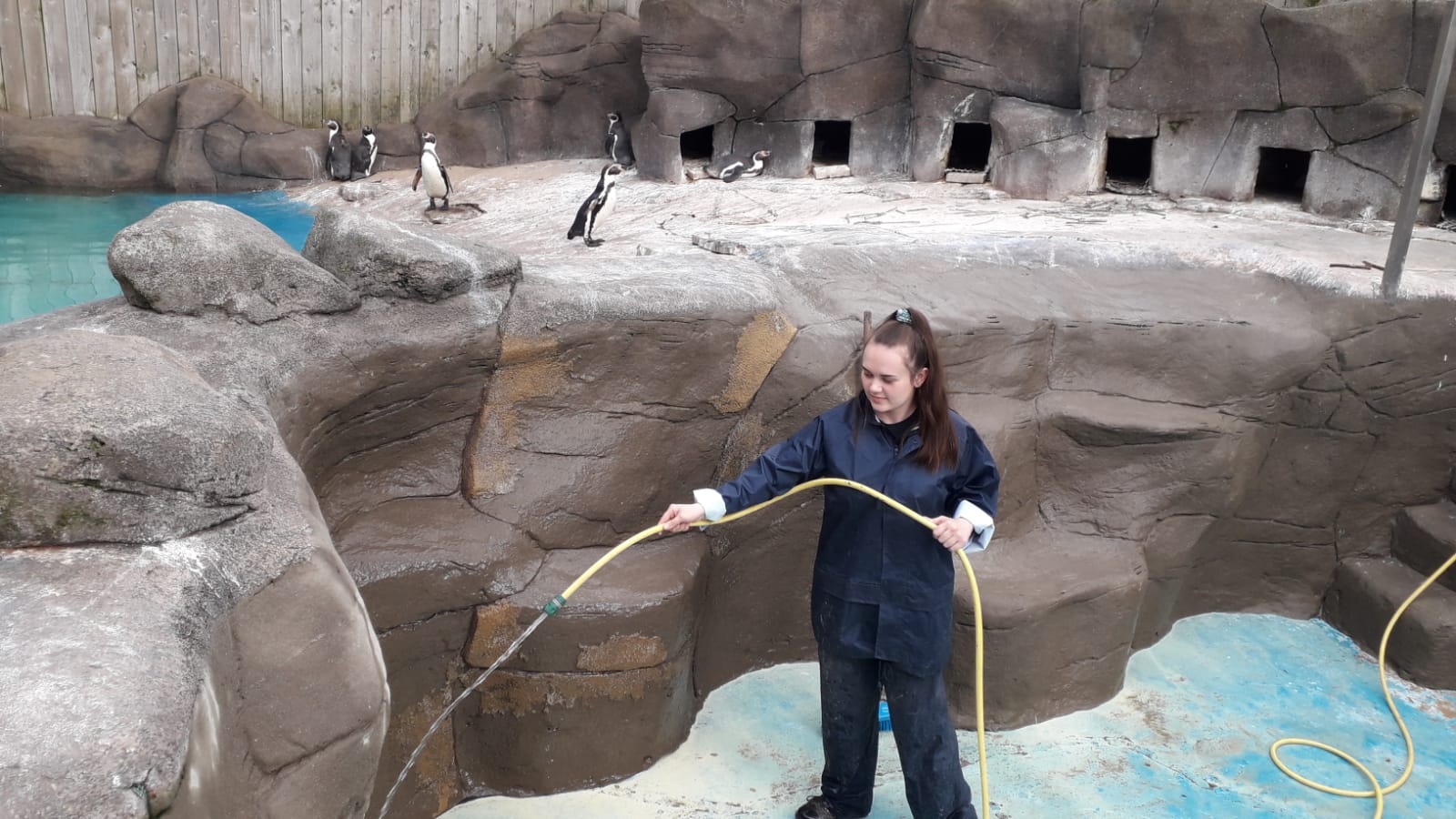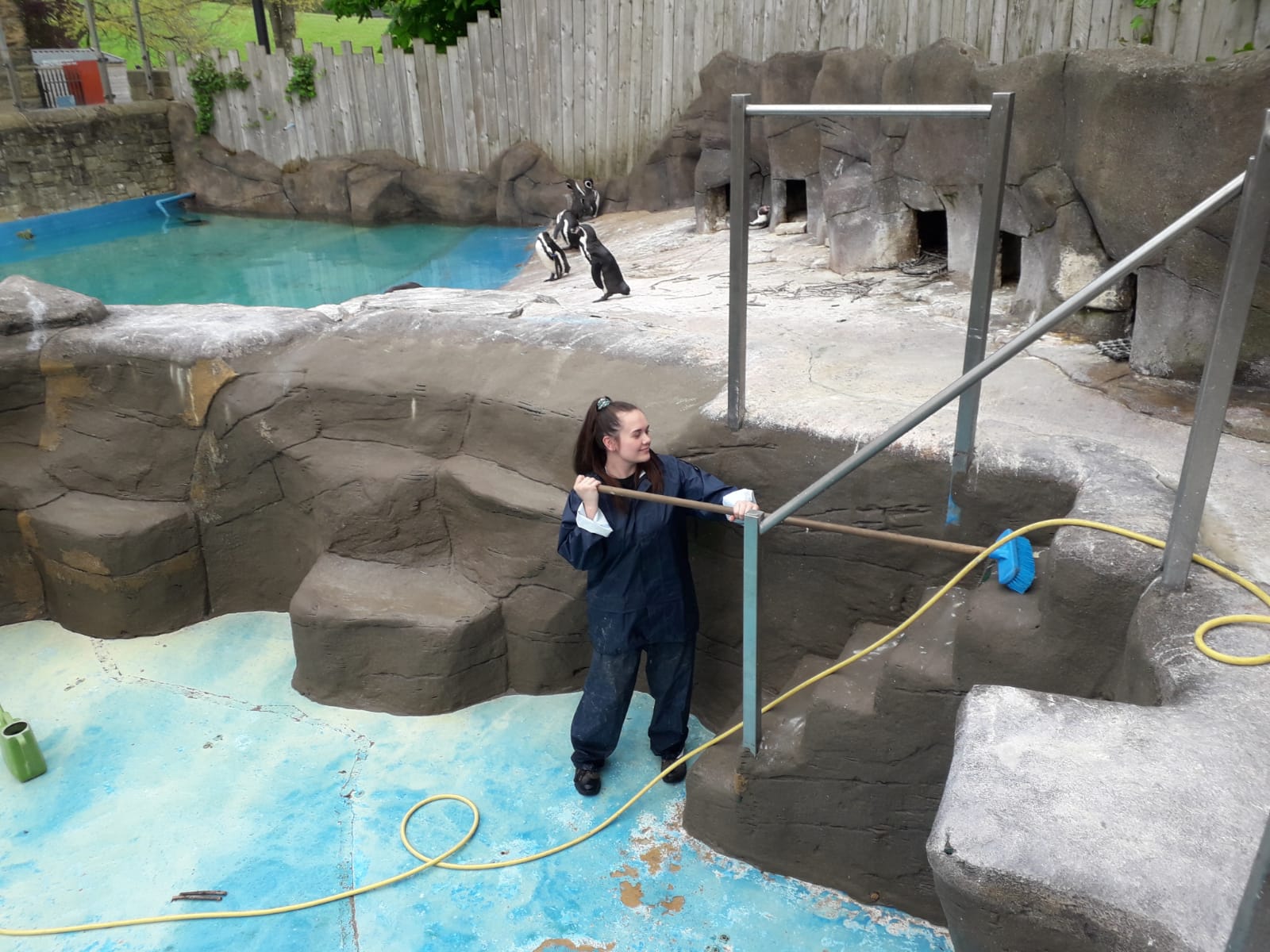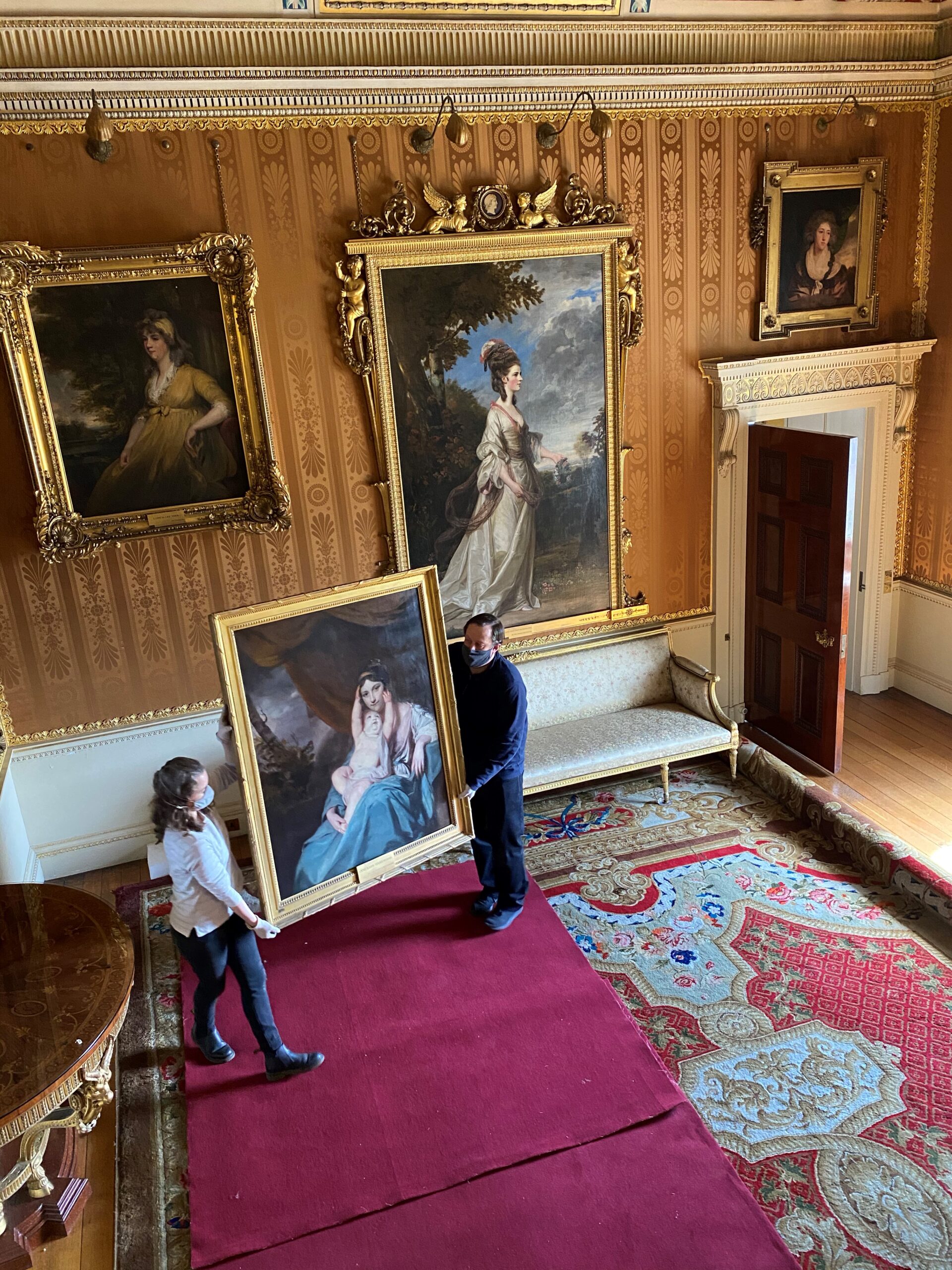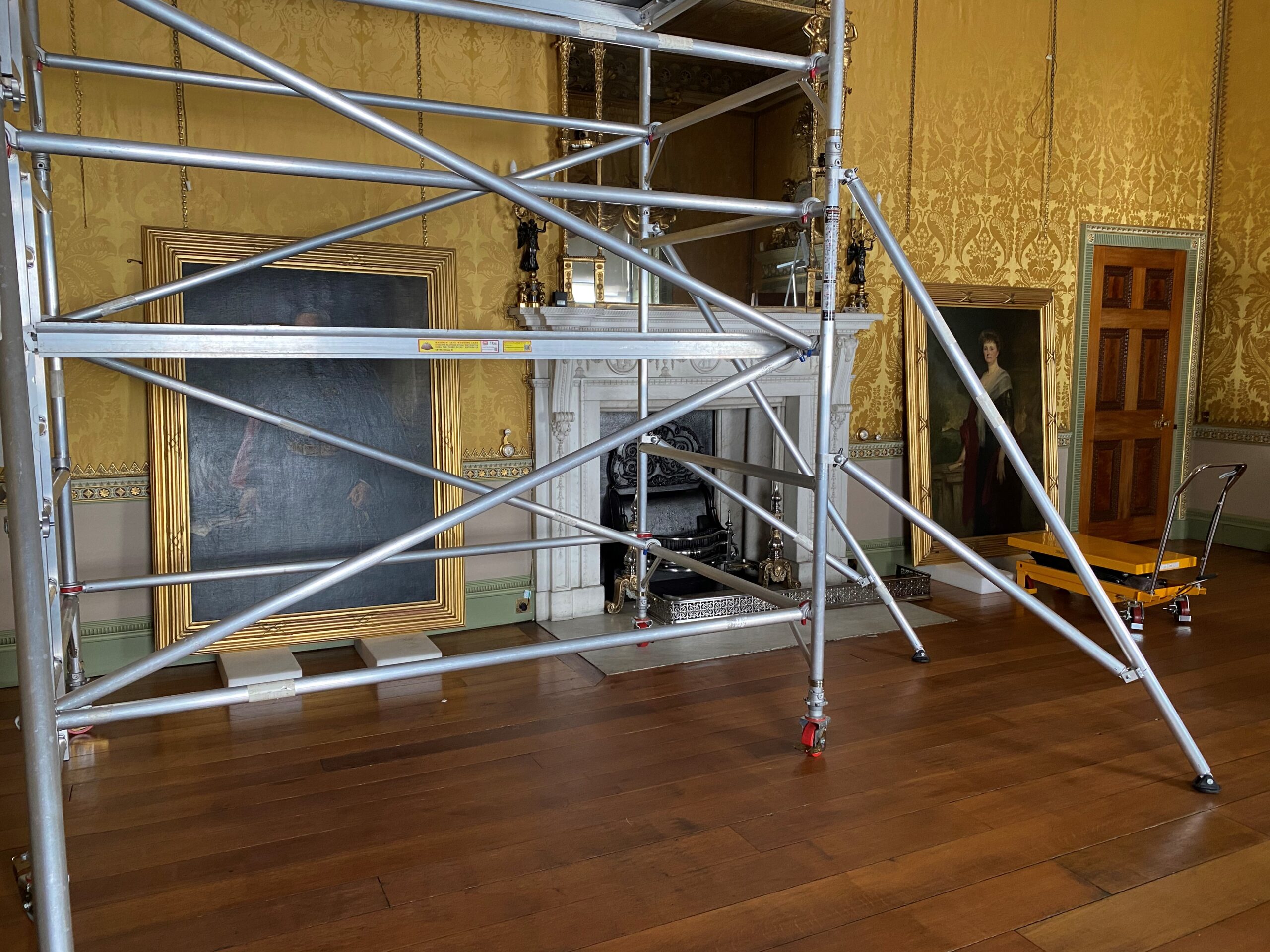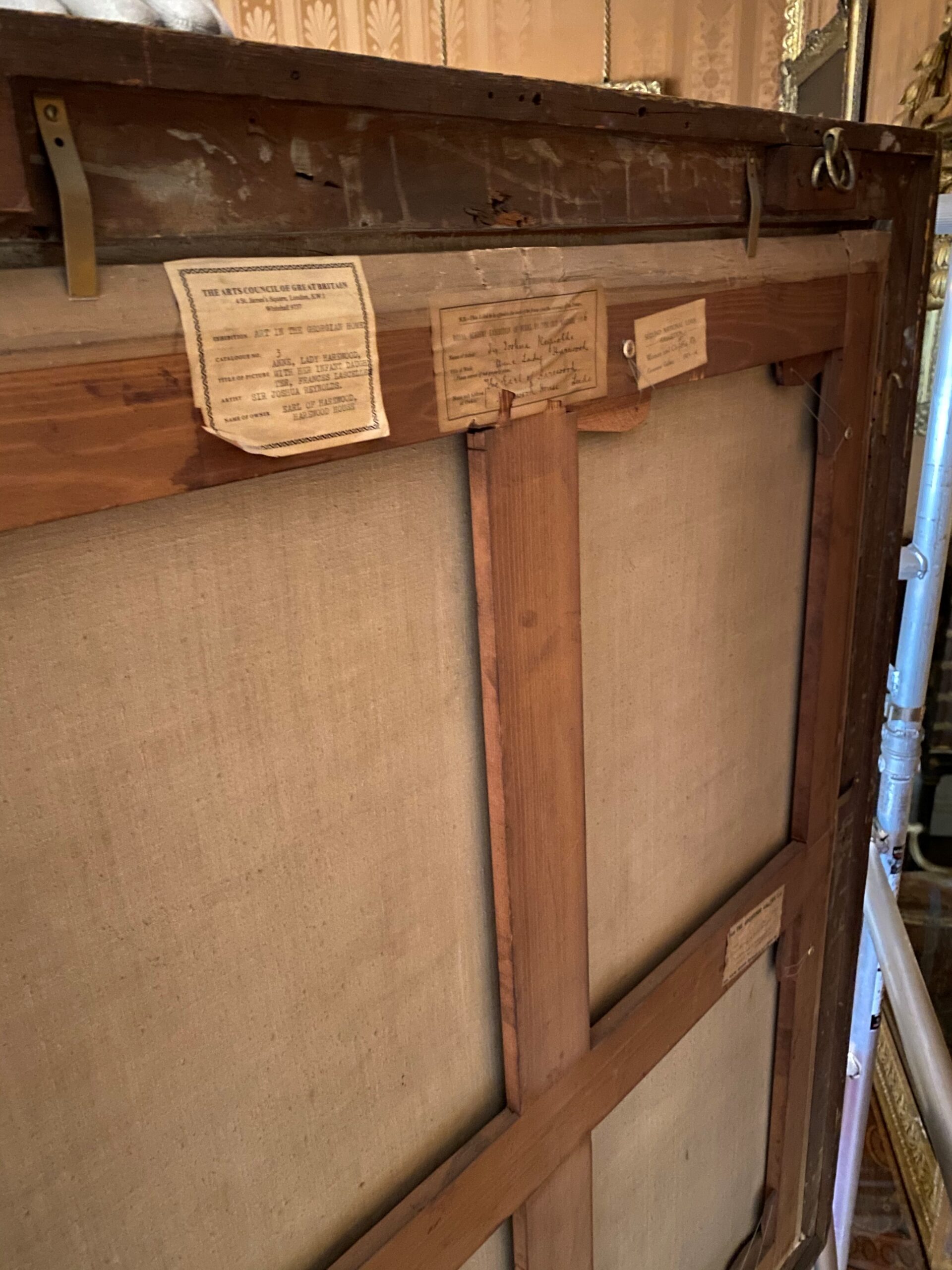
This week, nine huge Christmas trees have been delivered to Harewood, ready to be decorated by our brilliant volunteers for the festive season. Seven will stay outside, but two will stand in the House: one in the Entrance Hall, one in the Gallery among Upon a Christmas Wish. Getting a 15ft Nordmann Fir through several 3ft-wide doors and rooms full of priceless furniture and interiors is certainly not a piece of (Christmas) cake…
But first, let us take you back a few weeks to 10 September. At Stockeld Park, a few miles from Harewood, two members of the Harewood House Trust visitor engagement team are traipsing back and forth in a field of thousands of Christmas trees. We’re wearing winter jumpers in honour of the occasion – choosing the biggest, bushiest trees to decorate Harewood later in the year – unfortunately it’s nearly 20°C and we’re roasting!
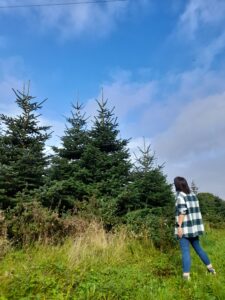
“Are those two the same height?”
We push on nonetheless, looking for several pairs of trees. We need good matches, as they will be standing in pairs at the Arch, the Courtyard and on the Terrace; we also need them as tall as possible, so they don’t get lost in the grand surroundings of Harewood. This is surprisingly difficult, and we definitely get our daily step-count in as we walk to and fro to find matching trees! Once we’ve picked a tree, it gets a reservation label, ready for felling and transporting to Harewood later in the year.
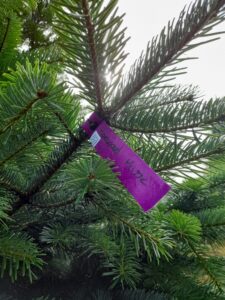
Labelled and reserved for Harewood
On Tuesday, it was time for a team of several staff to get two Nordmann Firs into the House.
Dust sheets were wrapped around each tree, then ratchet straps drawn around the bundle to reduce the width, but without snapping any branches. It was then a case of carefully lifting each tree through the front door (the easy, wide one) and then, for the Gallery tree, through several further internal doors, only three feet wide.
Many pieces of furniture and ornaments have been moved out of harm’s way, but it’s still a tense process for the House Collections team, as the tree squeaks past 250-year old wallpaper, paintings and mirrors. “My only consolation is that it’s been done this way since 1850!” laughs Rebecca, Harewood’s Assistant Curator and Archivist. “Even though it makes us really anxious, the process makes you feel linked to all the Harewood staff who have been through exactly the same emotions over the years.”
We can infer that stress from the first reference to a Christmas tree at Harewood (that Rebecca has found so far), in the ‘Came and Went Away’ book – which was like a House visitor book, usually used to record all the family members and their guests arriving and leaving the house. It lists New Year’s Eve of December 1850, possibly referring to the tree being ‘taken away’, having been in the House through the Christmas period, though it may be that the tree was only in the House for one day. We do know that Christmas trees were popularised amongst the wealthy by an engraving that appeared in the London Illustrated News in 1848, of Queen Victoria, Prince Albert and their family stood around a Christmas tree. Harewood’s tree may well have been responding to this new fashion.
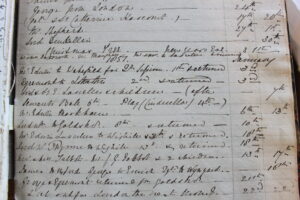
Reference to the Christmas tree in the Came and Went Away Book
“The Christmas Tree entry in the Came and Went Away Book was probably written by a member of staff like the Butler,” explains Rebecca. “Perhaps he decided to record the occasion of bringing in a tree because it was such novelty, and undoubtedly quite a physical (and messy!) challenge, just as we’re experiencing today.”
Despite the arduous process, in 1850 and in 2021 the trees were successfully brought in. They now stand ready and decorated, to be enjoyed by all the visitors to Harewood this Christmas season.
Book your tickets now to see Harewood’s Christmas trees and enjoy all the festive season has to offer.

